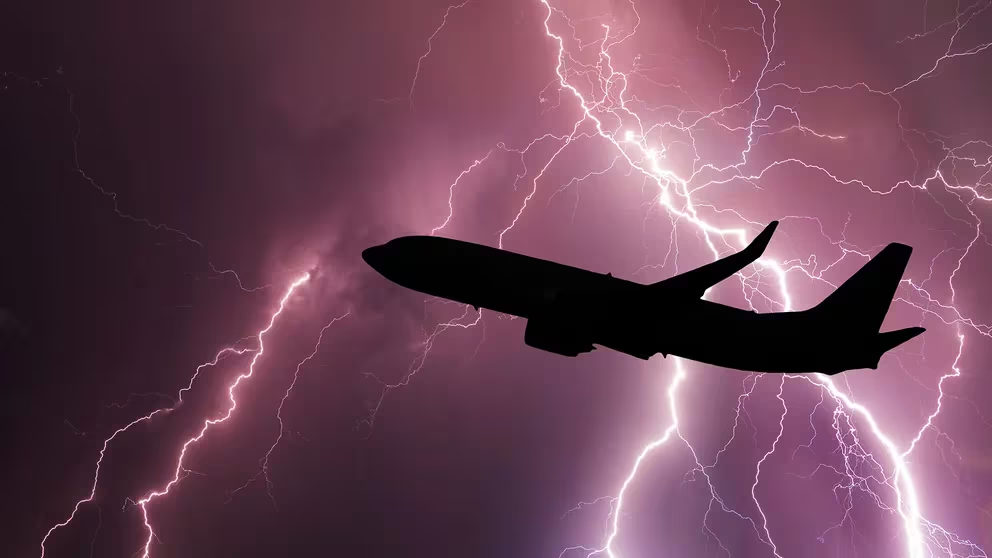Practical road-trip notebook in Puglia
WHEN TO GO? Avoid summer because even if the region remains unknown to foreign tourists, it is popular with Italians, many of whom come to sunbathe on its beaches and coves in high season. Spring or autumn remain the best seasons: fewer people, less heat. If you are more of a beach person, opt for autumn, the sea will still be warm. If you are more into hiking/nature, then choose spring!
TIME DIFFERENCE : none
ITINERARY PROPOSED IN THIS ARTICLE:
- Inland and more specifically the Itria Valley. An agricultural region dotted with beautiful villages and these typical constructions called trulli
- A small stretch of the Adriatic coast to discover 2 charming villages (Monopoli and Polignano a Mare) and the nature reserve of Torre Guaceto
- Lecce, baroque jewel not to be missed!
- If you have time, push the discovery towards Basilicata, a region adjoining Puglia and which reserves a major surprise: the city of Matera. I had planned it on the program but the winding roads of southern Italy and my fat belly as a pregnant woman of almost 7 months encouraged me to go there piano piano and to give up a few visits including this one, at the benefit from relaxation and contemplation.
Visit Puglia in 5 days, essential n°1: Alberobello and the Trulli
For simplicity, let’s start with what is undoubtedly the most emblematic element of Puglia , the most Instagrammed, photographed element, in short, impossible to miss when we talk about tourism in this region: I mean the Trulli in the plural or Singular trullo
But what is a trullo? Visually, it boils down to a traditional small house with dry stone walls and a summarily carved conical roof at the top. As decoration?
- The pinnacle first, of more or less complex shape depending on the level of wealth of the owner.
- The symbols painted in white then, which adorn the roof and often borrow from Christian or pagan culture. They would be there to ward off bad luck.
Symbolically the trulli go far beyond simple architectural curiosity. They bear witness to a way of life that no longer exists today and to dry stone construction techniques that are thousands of years old;
And why these buildings by the way? Originally in the 17th Century, these strange houses were built by peasants unwilling to pay property tax, the dry stone technique having the advantage of being easily dismantled… before the tax collector arrived, for example….
The village of Alberobello has the largest concentration of trulli in all of Puglia . Let it be said, the place classified by Unesco in 1996 has become a tourist trap, a vast cash machine that you take the full brunt of on arrival since you have to pay 2€/hour to get park in the various car parks that surround the village and “touristify” the place a little more.
I hardly wanted to linger in its alleys where souvenir shops follow one another with their products derived from more or less dubious trulli: in key rings, postcards, placemats… The only consolation, out of season the tourist influx remains reasonable. Left at the end of March, I was able to take a few photos without my lens having to suffer from an instagrammer in full ridiculous pose or from an armada of Japanese
In fact, the best way to admire these typical constructions is to drive through the Itria Valley. Along the way, we come across them, most often abandoned, placed here and there in the middle of a field of olive or almond trees.
Visit Puglia in 5 days, essential n°2: Lecce or baroque florence
Of all the heritage treasures of Puglia, my favorite is definitely Lecce , a sort of open-air manifesto of the extent of decorative extravagance offered by Baroque architecture.
This little jewel full of elegance and refinement is a delight for the eyes. Each square, each building, each facade is an opportunity for retinal pleasure that can last for hours if you take the time to examine every detail.
Because one of the characteristics of the Baroque and more particularly of the “Barocco Leccese” is the abundance of richly worked decorations made possible thanks to the use of “pietra leccese”, a local limestone so soft that it offers a playground ideal for those creators of the Baroque overflowing with virtuosity and creativity.
These architects, who all lived in the 17th Century, gave their city a remarkable unity, whether in the style or the material used.
The homogeneity is such that when you stroll there, you have the impression of evolving in a theater set, a huge theater set…
…which unfolds in a maze of alleys punctuated by countless churches (there are 23 in the old centre), squares and more or less large and always ornamented palaces. This theatrical effect finds its climax in the Piazza del Duomo , a square enclosed on each side by a monument. The whole forms a stunning whole of beauty.
-
Where to sleep in Lecce?
B&B PALAZZO BIGNAMI
Halfway between a small family hotel and a charming bed and breakfast, I particularly liked the decor chosen with care, originality and elegance, the beautiful entrance and its very appreciable elevator (it avoids the stairs with a lot of luggage), the large breakfast room and its all-you-can-eat buffet of sweet or savory Italian specialities, the panoramic terrace and finally the location in a quiet and residential area 10 minutes from the center of Lecce (if you don’t get lost in the maze of alleys!)
Price: 65€/night with breakfast in low season
-
Where to eat in Lecce?
TRATTORIA GRANDMA TETTI
A good address for a traditional trattoria discovered thanks to a happy meeting with a French woman who has lived in Lecce for 20 years. Compassionate on seeing us, my boyfriend, me and my fat 7-month-old baby walking painfully through the streets of the city in search of a restaurant; she kindly came to help us and even drove us to the entrance of said restaurant! On the menu: small, varied and excellent starters, homemade pasta and efficient service, all in good quantities, speaking of a pregnant woman!
Visit Puglia in 5 days, essential n°3: the perched villages of the Itria Valley
Locorotondo, Ostuni, Cisterno or even Martina Franca, all these villages are located in a valley in the center of Puglia. On the road you have to look up because very often they are perched on a hill. You also take your foot off the accelerator and take the small country roads framed by olive groves carpeted in this month of March with small bright yellow flowers. This environment gives a very “natural” accent to our trip and contrasts with the km of coast that make up the identity of Puglia.
Each of these villages has its own charm and at the end of March, we met a lot of Italian families over the weekend. What bring all this life and this animation inseparable for me in the South of Italy .
In Ostuni you have to aim for the cathedral. Easy to spot (but not to find unless you have a minimum sense of direction, which is far from my case) it overcomes a jumble of white facades.
At Locorotondo, which was our base camp for 2 days, you have to get lost in the maze of alleys and soak up the false air of a Greek village.
In Cisterno, after a short tour of the village, we had a drink on a mini terrace overlooking the famous Itria Valley. It is the meeting place for young people and we felt so good there that it was difficult to get out of it to take a little tour of the village which is going well.
-
Where to sleep in Valle d’Itria?
BED AND BREAKFAST PIETRA PESARA in LOCOROTONDO
Francesca is a child from Puglia but not precisely from the Itria Valley. This did not prevent him from settling there and magnificently restoring an old farmhouse with trulli to transform it into 3 guest rooms with stripped down and rustic luxury. Francesca is available 24 hours a day for her guests. She is the one who prepares all the good things for breakfast: focaccia, cakes, yogurts… everything is homemade and always based on local products! We only stayed two nights and it was with regret that we left this place surrounded by centuries-old olive trees (the region is the country’s leading olive oil producer) and calm, all strategically placed for radiate in the region. .
Price: 70€/night with breakfast in low season
-
Where to eat in Vallé d’Itria?
CASA PINTO in LOCOROTONDO
No ostentatious storefront, just a discreet door sheltered from a small alley. Inside, a few tables, a wood-fired oven and delicious pizzas at unbeatable prices (around €10). Served ultra fast, perhaps barely too much.
Visit Puglia in 5 days, essential n°4: seaside villages
This is what I love about Puglia : in a few kilometers you can go from the countryside to the sea (or vice versa); from beautiful green expanses dotted with buttercups to the captivating blue of the sea. We pass from the gnarled trunks of olive trees to the small fishing boats that clump together in tiny ports or seen differently from olive to fish the two products phrase of the cuisine of Puglia, rooted in an arid land bordered by two seas (Adriatic Sea and Ionian Sea)
From Monopoli I remember this perfect balance between a charming historic center with winding streets and a turquoise sea. Polignano a Mare stands out for its cliffside location. Undeniably it bears its name well because it could not be more “on the sea”, which gives it a little air of the end of the world. The rocky promontories plunging into the crystal clear waters of the Adriatic are like an invitation to take the leap of the angel. As for the 3 panoramic terraces, they simply invite us to contemplate and fill our eyes with blue and infinity.
Visit Puglia in 5 days, essential n°5: Protected marine area of Torre Guaceto
The iodine shoot continues at the marine reserve of Torre Guaceta, a strip of land 6 to 8 km long made up of dunes and small coves that are inevitably deserted on this day in March. This was our last step before saying goodbye to this beautiful southern sun that warms the face and the heart at the end of winter. Farewell to these joyful visual snapshots typical of the summer holidays and particularly appreciated at the end of March. Farewell to the South, the sea, the olive trees, see you for a next southern cure soon!






























































